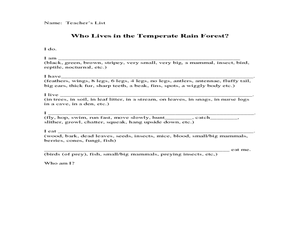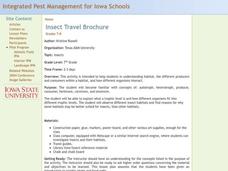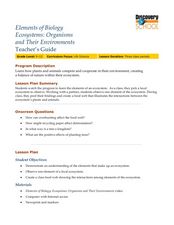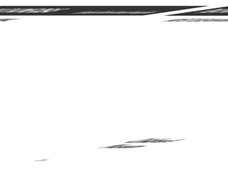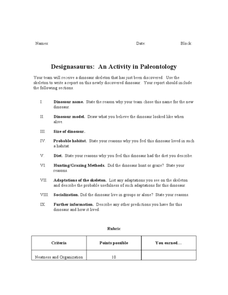Curated OER
Acorns
Students experience hoarding food for winter. In this squirrel lesson, students simulate hoarding behavior as either a red or gray squirrel. Students play a game called Winter Survival and discover how squirrels survive through the...
Curated OER
Hands on Habitat
Young scholars teach others about habitats. In this Science instructional activity, students use a Science Log to record data about a habitat for research. Young scholars analyze the data and construct an eco-chamber. Students share what...
Curated OER
Guess Who? Coral
Fourth graders identify and group coral formations. For this coral identification lesson, 4th graders examine coral pictures, discuss vocabulary, and provide similarities and differences in the growth formations.
Curated OER
Animals and Plants of BC's Rocky Shore
Students fill out a fact sheet and look at diagrams of BC's shore and the animals that live there. For this habitat lesson plan, students discuss the plants and animals and the different zones they live in.
Curated OER
Layers of the Forest
Students explore rain forests. For this rain forest ecosystems lesson, students identify and describe the layers of the rain forest. Students paint and decorate a large rain forest mural. Students write riddles about animals that...
Curated OER
Describing Animals
Students investigate different types of pets. In this pets lesson, students discuss a variety of animals and their habitats. Students complete activities such as pet pictionary, pets as fashion accessories, role playing pet...
Curated OER
I See a Coyote
Students role-play coyotes looking for natural resources. In this natural resources instructional activity, students examine the relationship between animal life and the environment. Students play a game that demonstrates how...
Curated OER
Animal Colors and Shapes
Students investigate the natural characteristics of animals by completing a coloring activity. In this animal properties lesson, students investigate the reasons different animals have specific colors, and how it is essential for...
Curated OER
Layers of the Forest- Leaf Litter
Learners conduct an experiment. For this temperate forest lesson, students discuss what kind of animal life can be found in the forest. They read The Magic School Bus Meets the Rot Squad: A Book About Decomposition and complete an...
Curated OER
Fred the Fish -- A River Ran Wild
Students apply cause and effect relationships to water pollution in a stream. In this pollution lesson students recognize the importance of clean water in their daily lives. Students accompany "Fred the Fish" as he travels down stream....
Curated OER
Adapt a Poem to a Wetland Habitat
In this adapt a poem to a wetland habitat worksheet, students read the poem "Over in the Meadow", then write 5 new stanzas using that format about a wetland or a swamp and its animals. This page has several links to helpful websites.
Curated OER
Insect Travel Brochure
Students explore the concept of insects and their habitats. In this insect habitat lesson, students create travel brochures for particular insects. Students must include habitat, producers, and consumers with in the vacation...
Curated OER
The Importance of Trees in the Rural Area: Planting a Snowfence
Students discuss the importance of trees and work together to plant a living snowfence. In this tree importance lesson, students discuss why trees are important in rural areas. They use mathematics and team work to plant a living snowfence.
Curated OER
Organisms and Their Environments
Learners study a local ecosystem and research the organisms to create a food web. In this ecosystem lesson, students view a video and answer questions. They visit a local ecosystem and make a list of organisms to research. Learners...
Curated OER
A Wild Chain Reaction
Students explore habitats. In this habitat instructional activity, students break into groups and are labeled as a part of a habitat. Students then do an activity with yarn that shows how all of the parts are connected...
Curated OER
Biology In Elementary Schools
Students classify animals into six major animal groups and describe the characteristics of the animals found within each group. In this living and non-living animals lesson, students observe a variety of animals, both living and...
Curated OER
Creating a Pond Habitat
Students create a pond habitat inside and outside their classroom. In this pond lesson plan, students create a habitat with animals, water, and plants in order to create a proper pond habitat.
Curated OER
What Animals Need to Live
Fourth graders read "Habitat: What Animals Need to Live" then create a Venn diagram for herbivore, omnivore, and carnivore. In this animal survival lesson, 4th graders determine where different animals need to live depending on what they...
Curated OER
Building a Bird's Nest
Students identify local birds and their habitats. In this wildlife lesson, students list various birds that live in their area and match the descriptions of the birds to the photos. Students build a diorama of a birds nest.
Curated OER
Move it Like An Animal
Learners investigate how animals move. In this animals lesson, students use pictures of animals and demonstrate how each of them moves from place to place.
Curated OER
For The Birds
Students observe birds building their nests. In this habitat lesson, students develop a Best Building Supply Bag and record how the birds build their nests. Students keep a Field Journal.
Curated OER
Striking a Balance
Students simulate animals in a food chain. In this food chain lesson plan, students are identified as grasshoppers, frogs or hawks. Popcorn is spread across a lawn and students are given baggies (stomachs) and colored sashes to identify...
Curated OER
Life Processes
Learners identify life processes and create their own creature. In this creative science lesson, students identify an organism's life processes and categorize them into groups. They then create their own creature and write about how it...
Curated OER
Designasaurus: An Activity in Paleontology
In this dinosaur instructional activity, students are given a dinosaur skeleton and they work in teams to report about a "newly discovered dinosaur". They create and include it's name, a model of it, its size, the habitat it lived in,...






